Some of the tips to prepare for the CLAT 2026 Quantitative Techniques section are daily practice, solving sample papers, and knowing basic mathematics formulas. Get more such effective tips and tricks for the Quants section from this article.
- CLAT 2026 Quantitative Techniques Section Highlights
- CLAT 2026 Quantitative Techniques Quick Tips
- CLAT 2026 Quantitative Techniques Syllabus
- CLAT 2026 Quantitative Techniques Detailed Syllabus
- CLAT 2026 Marking Scheme
- Tips and Tricks on CLAT 2026 Quantitative Techniques
- Skills Needed to Solve CLAT 2026 Quantitative Techniques
- CLAT 2026 Quantitative Techniques Best Books
- CLAT 2026 Quantitative Techniques Online Resources
- Section-Wise CLAT 2026 Preparation Tips
- Faqs
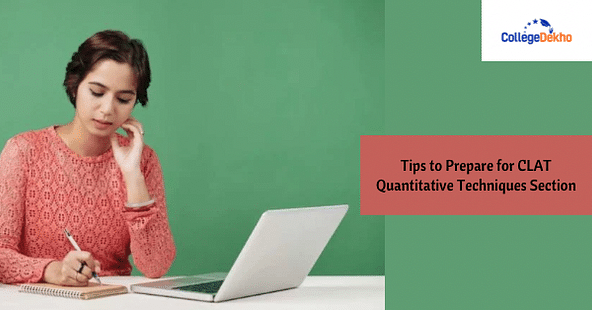
The CLAT 2026 Quantitative Techniques section has 10% subject weightage and around 10-14 questions are asked from this section every year. This section evaluates the mental aptitude and basic mathematics skills up to class 10th of the aspirant. Some of the preparation tips for CLAT 2026 Quantitative Techniques section are to adapt daily practice, analyse previous year question papers, understand the demand of the subject, solve sample papers, mock test papers, and build conceptual clarity.
CLAT 2026 is scheduled to be conducted on December 7, 2025. You should utilise this time to have a good grip on the Quants section. The preparation tips for CLAT 2026 discussed here will be helpful for you to ace the exam in 4 months. Read the article given below to get detailed knowledge about the tips to prepare for the CLAT 2026 Quantitative Techniques section.
CLAT 2026 Quantitative Techniques Section Highlights
It is essential for the test-takers to know about the CLAT 2026 Quantitative Techniques section before devising a preparation strategy. The table given below provides insights into the CLAT Quantitative Techniques section highlights.
Parameters | Details |
|---|---|
Section Name | Quantitative Techniques Section |
Number of Questions Asked from the Quantitative Techniques Section | 10-14 Questions |
Sectional Weightage | 10% |
Syllabus for Quantitative Techniques Section | Volume & Surface Area, Basic Algebra, Averages, Percentage, Statistics, Ratio & Proportion, Time & Distance, Data Interpretation, Roots, HCF & LCM, Pie Charts, Surds & Indices, etc. |
Important Topics | Averages, Percentage, Statistics, Ratio & Proportion, Time & Distance, Data Interpretation, Basic Algebra, etc. |
Also Read: Top 10 Preparation Tips to Qualify CLAT 2026
CLAT 2026 Quantitative Techniques Quick Tips
Coming to the quick tips to prepare for the Quantitative Techniques section of CLAT 2026, here are some of the significant ones:
- The aspirants must understand that the Quantitative Techniques section is one of the strongest sections for the top rankers of CLAT. Those who seek admission to the best National Law Universities (NLUs) in India must prepare this section thoroughly because it will have 10 -14 questions.
- The Quantitative Techniques section would be mostly application-oriented, so to ace this section, you have to focus on practising.
- Prepare a study plan! Although this section has the least weightage, an appropriate amount of time and practice must be dedicated.
- Practice is the key to achieving a good score in this section. You must take mock tests and practise the sample questions provided by the conducting body of CLAT 2026.
- Find the best books for CLAT 2026 to practice the topics involved in the CLAT 2026 Quantitative Techniques section.
- To score average marks in the Quantitative Technique section of CLAT 2026, you need to practice every day. Look only for the quant questions to prepare for this section.
- Watch preparation videos available on YouTube that are available for free and solve questions at the same time.
CLAT 2026 Quantitative Techniques Syllabus
A series of questions will be asked based on this segment. Here are a few important topics for Quantitative Techniques of CLAT UG 2026.
Volume & Surface Area | Statistics |
|---|---|
Basic Algebra | Average |
Percentage | Ration & Proportion |
Time & Distance | Data Interpretation |
HCF & LCM | Pie Chart |
Roots | Surds & Indices |
The applicants have to thoroughly read the given passage, graph or representation, derive information from them and apply mathematical techniques to answer the questions.
CLAT 2026 Quantitative Techniques Detailed Syllabus
CLAT UG 2026 Quantitative Techniques section will contain short sets of facts or propositions, graphs, pictorial or diagrammatic, or other textual representations of numerical data from the graphs, representations or passages. The section needs the application of mathematical operations to such questions.
These questions will demand the following:
- Deriving, inferring and manipulating numerical information given in the passages, graphs or other representations, and
- Applying various 10th standard mathematical operations on the information, from areas like ratios and proportions, mensuration, basic algebra and statistical estimation.
CLAT 2026 Marking Scheme
Check out the marking scheme for the CLAT 2026 exam:
Response | Marks |
|---|---|
Correct Answer | + 1 Marks |
Incorrect Answer | -0.25 Mark |
Unanswered / Unattempted Question | 0 Mark |
Tips and Tricks on CLAT 2026 Quantitative Techniques
The Quantitative Techniques section is scoring if you have conceptual clarity, as only 14 questions are asked from this section. Some tips and tricks to answer the CLAT 2026 Quantitative Techniques section are discussed below.
- Clear Basics
To answer the Quantitative Techniques section accurately, you must be thorough with its basics. To clarify the concepts of some topics, aspirants can go through their Class 8 - 10 textbooks.
- Practice
The key to succeeding in the Quantitative Techniques section is regular practice. Spend at least one hour every day on this section and make it a part of your routine. The CLAT mock test and CLAT sample papers are great sources of exam preparation.
- Solve CLAT Question Papers
Solving the maximum number of CLAT previous year question papers will help you understand the question paper structure. But once you have solved enough mock and sample questions, you can try answering the CLAT previous years’ question papers.
- Be Accurate
CLAT has negative marking for every wrong answer, so while answering the CLAT 2026 Quantitative Techniques section, you should be very accurate. One silly mistake is going to cost a lot.
- Use Shortcut
When it comes to the Quant section, learning shortcuts to solve the answers becomes very important. Learn shortcuts to quickly answer the questions and get enough time to focus on other questions.
Skills Needed to Solve CLAT 2026 Quantitative Techniques
Take a look at the skills needed by the candidates to solve the CLAT 2026 Quantitative Techniques section. Given here are the common skills needed:
- CLAT aspirants must have the ability to derive data from graphs, tables, and passages and operate them effectively as per the questions asked in the set.
- To solve the Quantitative Technique section, you must be well-versed in different types of charts and graphs, like pie charts, line graphs, bar graphs, etc.
- You must have basic mathematical knowledge, such as percentages, ratios and proportions, basic algebra, and basic geometry concepts.
Also Read: Colleges Accepting CLAT 2026 Score and Seat Matrix
CLAT 2026 Quantitative Techniques Best Books
To ace your preparation for the CLAT 2026 Quantitative Aptitude section, you have to read the best books for this section. Check below the names of the books that will help you in your CLAT 2026 Quant section preparation.
Name of the Book | Name of the Author/Publication |
|---|---|
Fast Track Objective Arithmetic | Arihant Publication |
30 days wonder for Maths | S Chand |
Quаntitаtive Арtitude fоr Соmрetitive Exаminаtiоns | Рeаrsоn |
Quantitative Aptitude for Competitive Examinations | R S Aggarwal |
Guide to CLAT & LLB Entrance Examination | Universal |
Magical Book on Quicker Maths | M. Tyra |
CLAT 2026 Quantitative Techniques Online Resources
Apart from CLAT 2026 Quantitative Techniques books, there are lots of websites that provide study materials, notes and e-books to prepare for CLAT. There are quite a lot of organisations that provide online paid as well as free classes and conduct mock tests to prepare students for CLAT. The mock tests are conducted category-wise, so you can apply for the mock tests and analyse your Quant preparation. Solving mock papers will help students to familiarise themselves with the type of questions asked in the examination. After analysing their scores, you will understand their strengths and weaknesses from the Quantitative Techniques section.
Section-Wise CLAT 2026 Preparation Tips
Click on the below-mentioned links to check out the section-wise preparation tips for CLAT 2026:
Tips to Prepare for the Current Affairs Section of CLAT 2026 | |
|---|---|
Tips to Prepare for the English Language Section of CLAT 2026 |
To know more about CLAT 2026 preparation, stay tuned to CollegeDekho . You can send your queries through our QnA Zone or call our toll free number - 1800-572-9877 for any admission-related assistance.
Are you feeling lost and unsure about what career path to take after completing 12th standard?
Say goodbye to confusion and hello to a bright future!

FAQs
The best books to prepare for the CLAT Quantitative Techniques section are Fast Track Objective Arithmetic by Arihant Publication, 30 Days Wonder for Maths by S Chand, Quаntitаtive Арtitude fоr Соmрetitive Exаminаtiоns by Рeаrsоn, Quantitative Aptitude for Competitive Examinations by R S Aggarwal, Guide to CLAT & LLB Entrance Examination by Universal and Magical Book on Quicker Maths by M Tyra.
CLAT aspirants must have the ability to derive data from graphs, tables, and passages and operate them effectively as per the questions asked in the set. Candidates should have knowledge of different types of charts and graphs like pie charts, line graphs, bar graphs etc and have basic mathematical knowledge such as percentages, ratios and proportions, basic algebra, and basic geometry concepts.
Yes, aspirants should clear the basics to prepare for the CLAT Quantitative Techniques section. To clarify the concepts of some topics, aspirants can go through their Class 8 - 10 textbooks.
Yes, candidates can use shortcuts to answer the CLAT Quantitative Techniques questions. For the Quant section learning shortcuts to solve the answers becomes very important. Aspirants should learn shortcuts to quickly answer the questions and get enough time to focus on other questions.
Yes, there are lots of websites that provide study materials, notes and e-books to prepare for the CLAT Quantitative Techniques section. There are quite a lot of organisations that provide online paid as well as free classes and conduct mock tests to prepare students for CLAT.
Yes, it is important to solve the previous question papers for the CLAT Quantitative Techniques section. Solving the maximum number of previous years’ question papers will help the candidates to understand the question paper structure. But, once the aspirants have solved enough mock and sample questions, they can try answering the CLAT previous years’ question papers.
The questions that are asked from the CLAT Quantitative Techniques section are short sets of facts or propositions, graphs, pictorial or diagrammatic, or other textual, representations of numerical data from the graphs, representations or passages. The section needs the application of mathematical operations on such questions.
The CLAT Quantitative Techniques section is very important as it is one of the strongest sections for the top rankers of CLAT. This section would have 10 -14 questions divided into 3 - 4 sets of questions. As this section will be mostly application-oriented, to ace this section, candidates have to focus on practising.
The syllabus of the CLAT Quantitative Techniques section includes Volume and surface Area, Statistics, Basic Algebra, Average, Percentage, Ratio and proportion, Time and distance, Data Interpretation, HCF & LCM, Pie Chart, Roots and Surds and Indices.
The CLAT Quantitative Techniques section includes graphs, tables, charts or a combination of graphs. It was previously known as Elementary Mathematics but was changed in 2020 to see if the candidate can reasonably deduce answers by looking at graphs, tables or charts.
Was this article helpful?










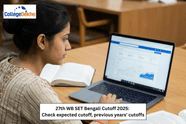


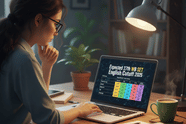


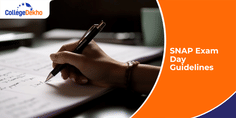
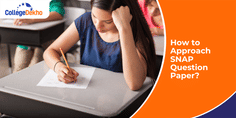
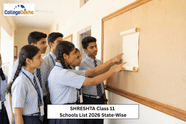


Similar Articles
AILET OBC Category Cutoff 2026: Check expected cutoff, previous years' trends
AILET General Category Cutoff 2026: Check expected cutoff, previous years' trends
AILET 2026 Exam Day Guidelines: Do's and Don'ts
Delhi LLB Admission 2026
LPUNEST Law 2026 Exam Pattern: Details, Syllabus & Best Books
LPUNEST for LLB and Integrated Law Course